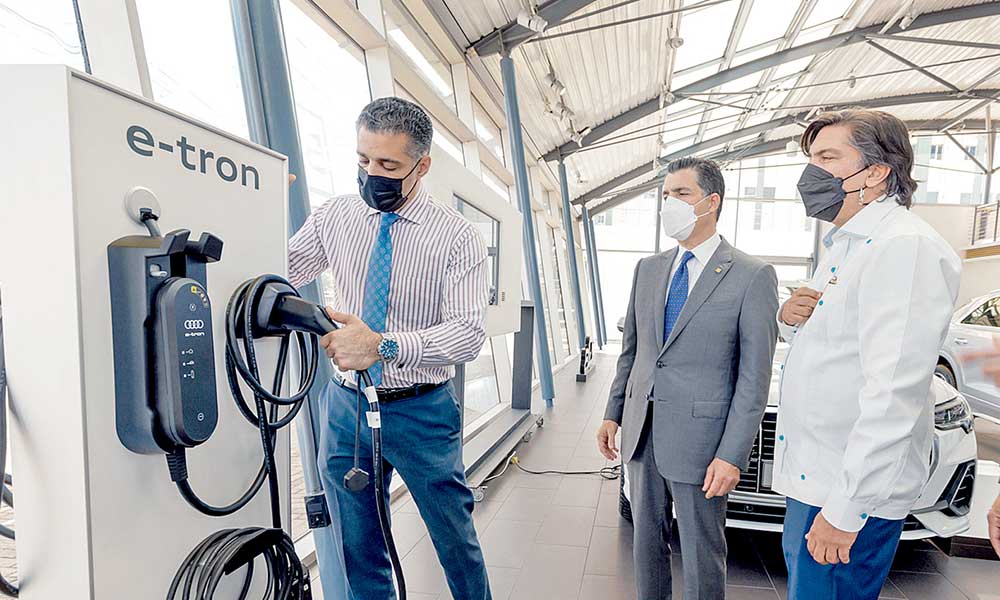The closure of one of the three prosecutor’s offices for adolescents responds, among other reasons, to the drop in crimes of minors. Among them, The decrease in charges of robbery stands out, which between 2019 (with data from February) and 2021 -with data up to and including October- decreased by almost 48.7% and the thefts that did so in 38%. In general terms, charges for crimes in adolescents fell 33.4% in that period.
When looking for an explanation, the answers that arise almost by inertia are two: the decrease in mobility due to the pandemic and which are figures that accompany the general downward trend. Between January and September 2019 and 2021, complaints for theft -in general- fell 19.2% and for robbery 29.4%, according to figures from the Ministry of the Interior.
The greatest drop in imputations occurred between 2020 and 2021. Last year there were 927 imputations and this 664, which means a fall of 28.4%.
Tamara Samudio, a member of the Observatory for the Rights of Children and Adolescents, told The Observer that The difference is “striking”. But the 2021 data does not include the last three months of the year, which are “complex months in terms of crimes” and when “there are more adolescent charges,” he warned, although he stressed that the trend will not change. In any case, there are still no studies in this regard and the Prosecutor’s Office does not have a conclusive motive either, but they admit that it was a key reason for eliminating the Second Shift Adolescent Prosecutor’s Office.
The prosecutor’s office for adolescents that was suppressed referred about 43 cases to the other prosecutor’s office in charge of María de los Ángeles Camiño. According to a report from the Attorney General’s Office, crimes committed by persons under 18 years of age in 2020 were 5% of the total.
The number of people to whom measures were ordered (whether they were deprived of liberty or not) had an increase between 2019 and 2020. Last year they were 735 and the previous 406. This 2021 they were 704. The Prosecutor’s Office clarified that the data from The accusations are dated according to the moment in which the act was committed and the data referring to the measures are recorded on the day the hearing was held, without taking into account when the aforementioned crime was committed.
The difference of 40 cases between the accusations made in 2021 and the people with restrictive measures respond to a remnant of accusations made in 2020, whose sentence was issued in 2021.
The increase in adolescents with restrictive measures responds to two changes introduced by the law of urgent consideration (LUC): the elimination of the conditional suspension of the process and the enabling of the abbreviated process for minors. The first remedy enabled an agreement between the prosecution and the person involved for crimes of up to three years in prison that, if fulfilled, allowed the offender to have no criminal record and to obtain the benefit again.
The second is a process that was already in place for adults, but has now been extended to adolescents. Avoid going to the oral trial (which involves several instances and tends to be lengthy in time) to enable an agile path that usually has only one instance. The LUC increased the penalties for adolescents from 5 to 10 years of age in cases of very serious crimes.
It implies that the accused accepts the facts that are adjudged to him and the antecedents of the investigation and can be applied from the formalization until the moment in which the prosecutor makes the accusation or asks the judge to dismiss. As a result of this acceptance, the prosecutor calculates a penalty that can be reduced by up to a third (although not less than the minimum provided by law for that crime). It can be used as long as a crime is typified with four years’ imprisonment or a non-custodial sentence, with the exception of homicide with special aggravating circumstances or very special aggravating circumstances. Then that agreement between the two parties (Prosecutor’s Office and the accused) is approved before the judge, who makes sure that all the guarantees have been fulfilled and that the accused understands that with this agreement he is admitting his guilt. This process is irreversible, that is, it does not have a possible appeal court.
The crimes most committed by adolescents and the least
Most minor offenders commit property crimes. But there is also a lower percentage that incurs violent crimes. According to judges and prosecutors, the cases are usually similar although the result is different. These are adolescents who do not have family support or references. They escape the educational system, do not enter the world of work and end up on the streets. When it comes to crimes, the oldest adolescents – between 16 and 17 years old – tend to commit the most violent actions. Those between 13 and 15 years old fall into the hands of Justice for cases related to narcotics or theft, said Vera Barreto, who he was in charge of a suppressed juvenile hall.
Samudio, detailed to The Observer that most are in the 16-17 age group and they are young “victims of continuous exclusion from public policies”. They are expelled from high school for some eventual absence and fired from the precarious jobs they can get.
















